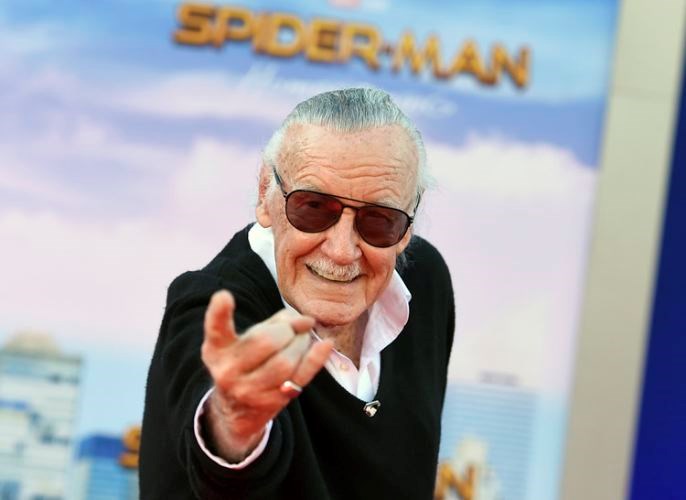By the time I started reading comic books in the mid-1970s, Stan Lee wasn't even the editor-in-chief at Marvel anymore, but he still contributed a regular column called Stan's Soapbox.
After I was done poring over my latest issue of the Amazing Spider-Man or Marvel Team-Up, I'd read Stan's latest missive. His chatty, breathless and wildly enthusiastic words made me an eight-year-old kid growing up in the Northwest Territories feel like he was being personally spoken to by a guy in New York City.
From there, it didn't take long to learn that Stan was the creative genius (along with artists Jack Kirby and Steve Ditko) of the modern Marvel universe, from my beloved Spidey through to the Hulk and the X-Men.
Two things attracted me to Marvel in general and my friendly neighbourhood Spider-Man in particular.
First, the characters seemed real to me. Peter Parker was an insecure science geek trying to finish his science degree at university, spend time with his doting Aunt May and his fierce and gorgeous redhead girlfriend Mary Jane Watson, make a living taking pictures for the Daily Bugle newspaper and then save the world while in costume. Batman's Bruce Wayne and Superman's Clark Kent seemed old, boring and stiff while Peter seemed like an older brother and his personal problems (school, family, friends, girlfriends) were exciting, especially to an eight-year-old.
Second, the place was real to me. The Marvel universe didn't take place in Batman's Gotham or Superman's Metropolis. Peter Parker had an apartment in Chelsea and Aunt May lived in Queens, both real neighbourhoods in New York City.
The writers who took over from Stan - Len Wein, Marv Wolfman, Chris Claremont were my favourites - not only kept that spirit alive but expanded it.
In Amazing Spider-Man 161, two future icons of the Marvel Universe - The Punisher and Wolverine - both make cameos but the real star of this two-issue story line with Spidey and the X-Men's Nightcrawler was New York City itself. Peter goes on a date with M.J. to Nathan's, the famous hot dog stand at Coney Island.
There's a great fight scene at the Queensboro (59th Street) Bridge and Roosevelt Island.
Over the coming years, New York came alive for me. Rockefeller Plaza, Times Square, the Brooklyn Bridge, the Statue of Liberty, Radio City Music Hall and the World Trade Center all figured prominently as Spidey battled a variety of mighty foes before returning home to Chelsea to have a bucket of ammonia water inadvertently tossed into his face by his landlady Mrs. Muggins while trying to sneak into his apartment.
Our hero can dodge the Punisher's bullets and the Green Goblin's bombs but gets the bucket of soapy water in the kisser. Some thanks for saving the city once more.
Lee's heroes were vulnerable people, burdened with powers they didn't want and often couldn't control. Discrimination was a real thing under his wing at Marvel, from the bigotry against mutants experienced by the X-Men to the ongoing efforts to have Spider-Man and the Hulk thrown in jail for the mess they left behind stopping the villain of the day.
Yet they fought on.
Even the supporting characters were significant.
The first black person I ever met was Joe "Robbie" Robertson. In 1967, a year after Lee introduced the world to the Black Panther in the pages of the Fantastic Four, Lee added Robertson as the editor of the Daily Bugle (the more infamous J. Jonah Jameson is the owner and publisher of the newspaper). Robertson was one of the first depictions of a black man in a management position in comic book history, portraying a calm and level-headed leader in contrast to both his boss and to the stereotype of the day where black male characters were introduced into storylines for comic relief.
By the time I started reading, Robbie was a regular, holding the fort down at the Bugle while Jameson spent more and more time and money trying to destroy Spider-Man. Robbie constantly argued with his boss over Spider-Man, insisting that the Bugle report the news, rather than be used for a political and personal agenda like discrediting a superhero.
And he fought on.
Lee introduced himself to a whole new generation through his regular cameos in the Marvel movies but he was far more than that crazy old slapstick clown. His written work in the 1960s, with insecure heroes operating in a familiar universe where nuclear holocaust, drug addiction, urban decay and discrimination were real issues, helped counter the white-washed blandness of the 1950s.
And he fought on, against the censorship of the Comics Code Authority, to define not only the Silver Age and Bronze Age of comics but a modern time where ordinary people can be heroes and overcome their personal shortcomings to do the right thing is the truest act of heroism.
Lee signed off his comic columns with "Excelsior!," a Latin word for "ever upward."
He lived his motto and inspired multiple generations to find their inner hero and do the same.
-- Editor-in-chief Neil Godbout



